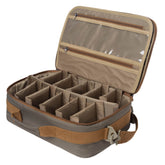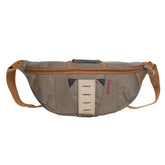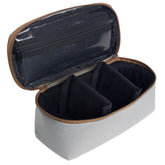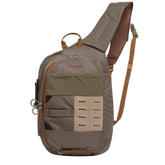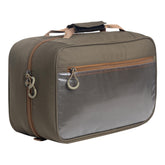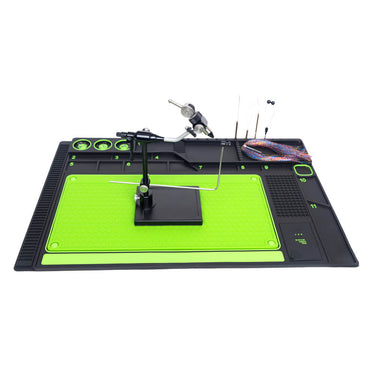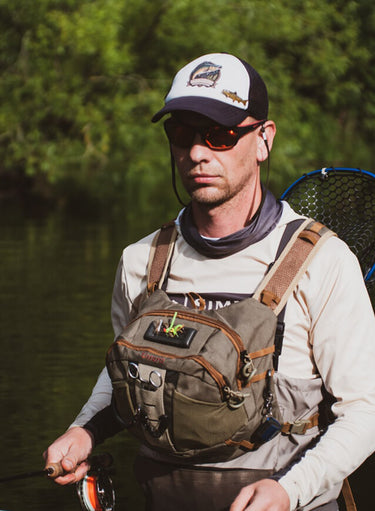Landing Net: Essential Guide for Bass, Kayak, and Saltwater Fishing
When out on the water, having the right gear can make all the difference in a successful fishing experience. A landing net is essential for safely catching and releasing fish, such as bass, without causing harm to their delicate fins and scales. This tool not only helps me land my catch but also ensures that I can return them to their habitat unharmed, promoting sustainable fishing practices.

For kayak anglers, a landing net specifically designed for kayak fishing is vital. These nets are usually compact and lightweight, making them easy to handle while managing a kayak's limited space. They enhance my ability to retrieve fish with minimal fuss, allowing me to focus on the thrill of the catch.
When targeting saltwater species, it's important to choose a landing net that can withstand harsher conditions and larger fish. A saltwater landing net with corrosion-resistant materials adds durability to my fishing gear, ensuring it performs effectively time after time. Investing in the right landing net not only improves my catch rates but also enriches my overall fishing experience.
Types of Landing Nets
Different types of landing nets cater to various fishing situations and species. Understanding these types can enhance my fishing experience and increase the efficiency of landing fish.
Bass Landing Net
A bass landing net is specifically designed for catching bass, whether in freshwater lakes or rivers. These nets generally feature a large hoop and a deeper net bag to accommodate the size and weight of bass. They often include a nylon or rubberized mesh that prevents injury to the fish’s skin and scales.
When selecting a bass landing net, I look for a telescoping handle for convenient storage and adjustment. The net size can vary, but a hoop diameter of 24-30 inches is common. This design allows for easy maneuverability while reducing the chance of losing a fish during the landing process.
Catch and Release Landing Net
The catch and release landing net is essential for anglers who prioritize fish conservation. These nets often have soft mesh materials that minimize harm to the fish, allowing for a secure and gentle landing. Additionally, they typically come in a variety of sizes to accommodate different fish species.
I prefer a net with a rubberized coating as it reduces the risk of removing the fish's protective slime layer. It's crucial to have a net with a wide opening, making it easier to scoop the fish out of the water without causing stress or injury.
Kayak Fishing Landing Net
When I fish from a kayak, a compact and lightweight landing net is essential. Kayak fishing landing nets are designed to be portable and easily stowed away. They often feature a shorter handle or a collapsible design to fit in tight spaces.
These nets typically have a buoyant construction, making them easy to retrieve if dropped overboard. I look for a net with a rubber mesh bag, which not only helps protect the fish but also prevents hooks from snagging. The right net can significantly enhance my fishing efficiency from a kayak.
Saltwater Landing Net
Saltwater landing nets are crafted to withstand harsh marine environments. These nets are often made from corrosion-resistant materials like aluminum or stainless steel, ensuring durability. The netting may also feature a larger mesh to accommodate bigger saltwater fish species.
When fishing in saltwater, the right net typically has a longer handle to reach fish that are more active and robust. Many also include features for easy cleaning, important for preventing salt buildup. Choosing a well-constructed saltwater landing net can improve my battle with larger game fish.
Material and Design Considerations
When selecting a landing net, I focus on the materials and design features that enhance functionality and durability. Key factors include the netting materials and specific design elements that improve usability and performance during fishing.
Netting Materials
The choice of netting material significantly impacts the net's performance. Rubber netting is a popular option; it is soft and snag-free, reducing the risk of damage to fish scales and fins during catch and release. This material also dries quickly and minimizes the odor often associated with traditional nylon nets.
Another effective choice is soft rubber netting, which offers a gentle touch and practicality in both fresh and saltwater environments. Lightweight design allows for easy handling, which is crucial when landing larger fish. While various materials exist, I prioritize ones that are durable yet gentle on aquatic life.
Design Features
In terms of design, I look for features that enhance ease of use. Anodized aluminum frames are a top choice due to their lightweight, corrosion-resistant properties. This makes them especially suitable for saltwater fishing.
Additionally, a collapsible or telescopic design can provide flexibility in storage and transport. I also prefer nets with a comfortable grip handle that ensures a secure hold while landing fish. These design considerations are essential for both functionality and convenience during my fishing excursions.
Selecting the Right Landing Net
Choosing the appropriate landing net is crucial for successfully landing and releasing fish. Factors such as the target species and fishing environment play a significant role in determining the right net for my needs.
By Target Species
When I select a landing net, I consider the target species. For larger fish like largemouth bass, I prefer a net with a size of at least 16” x 19”. This ensures I can easily scoop them up without risking escape or injury.
If I’m targeting trout, a smaller, lightweight net is adequate. A net with a deeper bag helps keep the fish submerged and calm. For inshore redfish, I choose a sturdy net that can handle their strength. The netting material also matters; a soft, rubber-coated mesh reduces fish injury during catch and release.
By Fishing Environment
The fishing environment influences my choice of net as well. In freshwater settings, I often go for nylon nets, which are durable and resistant to rot. In saltwater environments, it's essential to use corrosion-resistant materials; I prefer nets made from aluminum or fiberglass.
For kayak fishing, I opt for compact landing nets that can easily fit in my kayak without taking up too much space. Specialty nets, like the Yakattack landing net, provide added convenience with features tailored for the confined fishing space of a kayak. Choosing the right net enhances my fishing experience and ensures the well-being of the fish I catch.
Best Practices for Usage

Using a landing net effectively can enhance your fishing experience and promote responsible catch-and-release practices. I focus on careful handling to ensure the well-being of fish and maximize the utility of my landing net while fishing.
Efficient Catch and Release
When I engage in catch-and-release fishing, I make sure to minimize the fish's time out of the water. I keep the net wet and use a net with a rubberized mesh to reduce slime loss and prevent injury.
To land a fish, I scoop it gently and avoid over-handling. I hold the fish horizontally to support its weight and prevent stress. Once out of the water, I ensure my hands are wet to protect the fish's skin.
After taking a few quick photos, I quickly return the fish to its habitat. I always support its body and allow it to swim away on its own to promote recovery.
Proper Hook Removal
Efficient hook removal is crucial for successful catch-and-release. I utilize needle-nose pliers or a dedicated hook remover to safely extract hooks, especially if they are deeply embedded.
First, I try to keep the fish in the water as much as possible. If I need to remove the hook on land, I quickly wet my hands and minimize handling.
I pinch the barbs down on my hooks when I can. This action makes it easier to remove the hook and reduces damage to the fish. Always try to remove the hook by turning it in the direction of the fish's movement to minimize injury.



